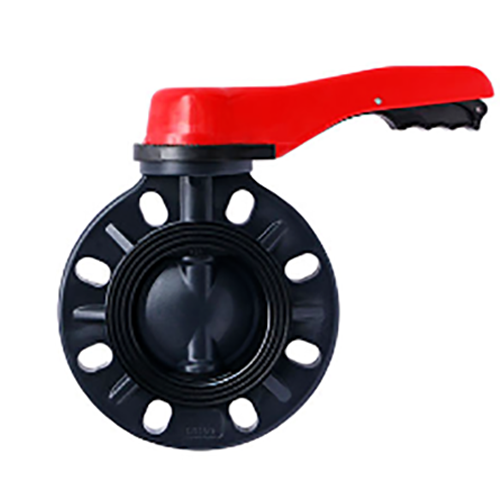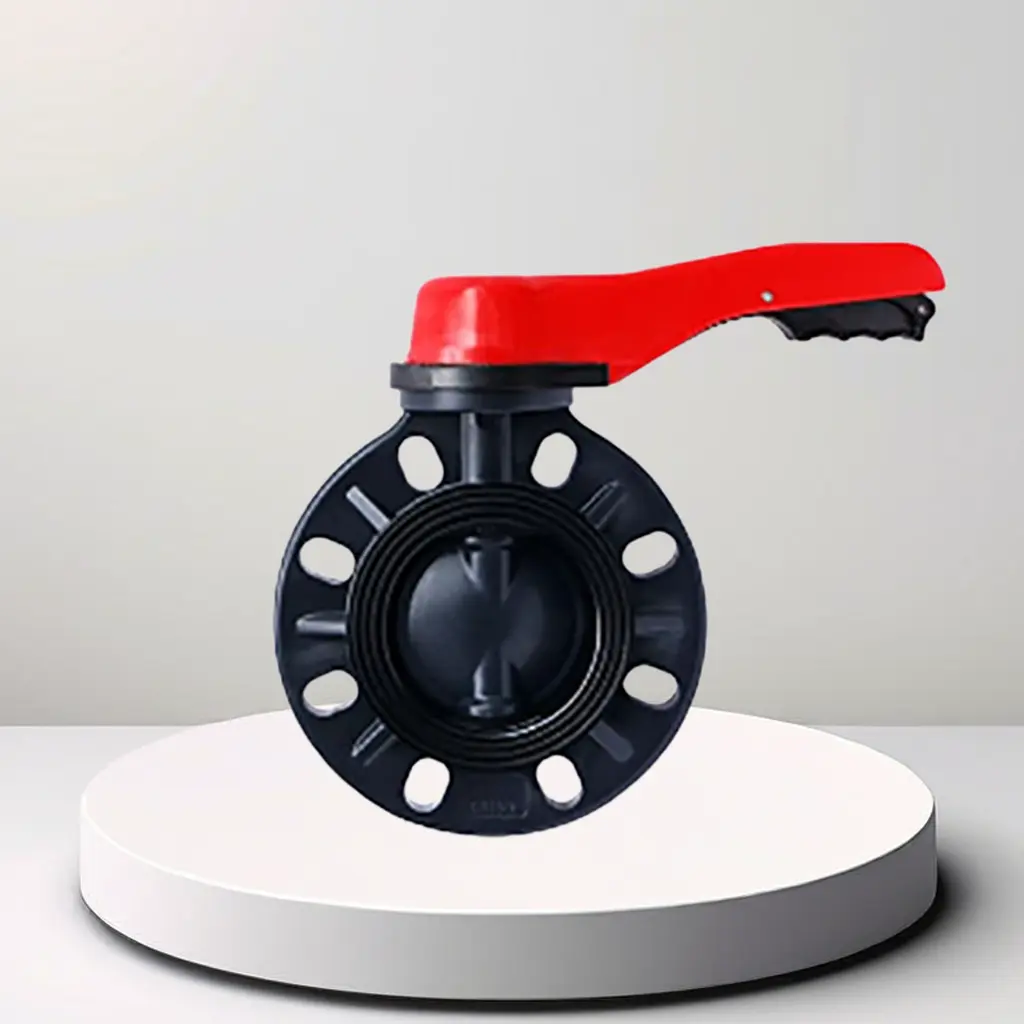Product Description
A UPVC (Unplasticized Polyvinyl Chloride) butterfly valve is a crucial component in many piping systems, used to regulate the flow of various fluids, including water, chemicals, and gases. UPVC is known for its excellent durability and chemical resistance, making these valves suitable for numerous industrial and commercial applications.
Components and Structure
A typical UPVC butterfly valve comprises several key components:
1. Body: The main structure of the valve, made from UPVC, which houses the internal components. The body is designed to withstand various pressures and is highly resistant to corrosion and chemical attack.
2. Disc: The central component that regulates flow. It is positioned perpendicular to the flow in the closed position and parallel in the open position. The disc's movement is controlled by the stem.
3. Stem: A shaft that connects the disc to the actuator or handle. It allows the rotation of the disc to open or close the valve. The stem is usually made from stainless steel or other corrosion-resistant materials.
4. Seat: The sealing component, often made from elastomers like EPDM (ethylene propylene diene monomer) or Viton, ensures a tight seal when the valve is closed, preventing leaks.
5. Actuator/Handle: The mechanism used to operate the valve. It can be a manual handle (lever or gear-operated) or an automated actuator (pneumatic, electric, or hydraulic) for remote or automated control.
Working Principle
The UPVC butterfly valve operates by rotating the disc within the valve body. When the actuator or handle is turned, the stem rotates, causing the disc to turn:
- Open Position: The disc is parallel to the flow direction, allowing fluids to pass through with minimal resistance.
- Closed Position: The disc is perpendicular to the flow direction, blocking the flow and creating a tight seal against the seat.
Advantages
1. Corrosion Resistance: UPVC material is highly resistant to corrosion and chemical attack, making these valves ideal for use with aggressive chemicals and in harsh environments.
2. Lightweight: UPVC is significantly lighter than metal, making the valves easier to handle and install.
3. Cost-Effective: Compared to metal valves, UPVC butterfly valves are generally more affordable, offering cost savings in both material and maintenance.
4. Durability: UPVC valves have a long service life due to their resistance to wear and corrosion.
5. Low Maintenance: The robust nature of UPVC reduces the need for frequent maintenance and replacements.
Applications
UPVC butterfly valves are used in a variety of applications, including:
- Water Treatment: For regulating water flow and controlling water treatment processes.
- Chemical Processing: In systems handling corrosive chemicals where metal valves would degrade quickly.
- Irrigation: In agricultural systems to control the distribution of water.
- HVAC Systems: For controlling the flow of cooling and heating fluids.
- Food and Beverage: In processing plants where sanitary conditions are crucial.
In conclusion, UPVC butterfly valves are essential components in many industrial and commercial systems, offering reliable performance, cost efficiency, and long-term durability. Their resistance to corrosion and chemicals makes them a preferred choice for various challenging applications.

